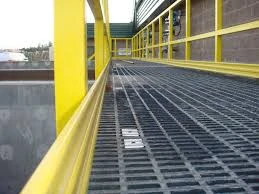
-
 Afrikaans
Afrikaans -
 Albanian
Albanian -
 Amharic
Amharic -
 Arabic
Arabic -
 Armenian
Armenian -
 Azerbaijani
Azerbaijani -
 Basque
Basque -
 Belarusian
Belarusian -
 Bengali
Bengali -
 Bosnian
Bosnian -
 Bulgarian
Bulgarian -
 Catalan
Catalan -
 Cebuano
Cebuano -
 China
China -
 China (Taiwan)
China (Taiwan) -
 Corsican
Corsican -
 Croatian
Croatian -
 Czech
Czech -
 Danish
Danish -
 Dutch
Dutch -
 English
English -
 Esperanto
Esperanto -
 Estonian
Estonian -
 Finnish
Finnish -
 French
French -
 Frisian
Frisian -
 Galician
Galician -
 Georgian
Georgian -
 German
German -
 Greek
Greek -
 Gujarati
Gujarati -
 Haitian Creole
Haitian Creole -
 hausa
hausa -
 hawaiian
hawaiian -
 Hebrew
Hebrew -
 Hindi
Hindi -
 Miao
Miao -
 Hungarian
Hungarian -
 Icelandic
Icelandic -
 igbo
igbo -
 Indonesian
Indonesian -
 irish
irish -
 Italian
Italian -
 Japanese
Japanese -
 Javanese
Javanese -
 Kannada
Kannada -
 kazakh
kazakh -
 Khmer
Khmer -
 Rwandese
Rwandese -
 Korean
Korean -
 Kurdish
Kurdish -
 Kyrgyz
Kyrgyz -
 Lao
Lao -
 Latin
Latin -
 Latvian
Latvian -
 Lithuanian
Lithuanian -
 Luxembourgish
Luxembourgish -
 Macedonian
Macedonian -
 Malgashi
Malgashi -
 Malay
Malay -
 Malayalam
Malayalam -
 Maltese
Maltese -
 Maori
Maori -
 Marathi
Marathi -
 Mongolian
Mongolian -
 Myanmar
Myanmar -
 Nepali
Nepali -
 Norwegian
Norwegian -
 Norwegian
Norwegian -
 Occitan
Occitan -
 Pashto
Pashto -
 Persian
Persian -
 Polish
Polish -
 Portuguese
Portuguese -
 Punjabi
Punjabi -
 Romanian
Romanian -
 Russian
Russian -
 Samoan
Samoan -
 Scottish Gaelic
Scottish Gaelic -
 Serbian
Serbian -
 Sesotho
Sesotho -
 Shona
Shona -
 Sindhi
Sindhi -
 Sinhala
Sinhala -
 Slovak
Slovak -
 Slovenian
Slovenian -
 Somali
Somali -
 Spanish
Spanish -
 Sundanese
Sundanese -
 Swahili
Swahili -
 Swedish
Swedish -
 Tagalog
Tagalog -
 Tajik
Tajik -
 Tamil
Tamil -
 Tatar
Tatar -
 Telugu
Telugu -
 Thai
Thai -
 Turkish
Turkish -
 Turkmen
Turkmen -
 Ukrainian
Ukrainian -
 Urdu
Urdu -
 Uighur
Uighur -
 Uzbek
Uzbek -
 Vietnamese
Vietnamese -
 Welsh
Welsh -
 Bantu
Bantu -
 Yiddish
Yiddish -
 Yoruba
Yoruba -
 Zulu
Zulu
frp desalination piping and fitting
FRP Desalination Piping and Fitting A Sustainable Solution for Water Scarcity
As the world grapples with increasing water scarcity, desalination has emerged as a vital technology. Desalination refers to the process of removing salt and other impurities from seawater or brackish water, making it suitable for human consumption and irrigation. The efficiency and effectiveness of desalination plants rely heavily on the materials used in their construction, particularly the piping and fittings. Fiberglass Reinforced Plastic (FRP) has emerged as a pioneering material in this regard, offering numerous advantages for desalination applications.
Understanding FRP
FRP is a composite material made from a polymer matrix reinforced with fibers. The fibers are usually glass, though carbon, aramid, or natural fibers can be used in some applications. FRP combines the lightweight properties of plastics with the strength of fiberglass, resulting in a material that is not only strong but also highly resistant to various environmental factors. This makes it an ideal choice for infrastructure in harsh maritime environments, such as those encountered in desalination operations.
Advantages of FRP in Desalination
1. Corrosion Resistance One of the key benefits of using FRP in desalination is its exceptional resistance to corrosion. Traditional metal piping materials can quickly deteriorate in the salty and chemically aggressive environments of seawater intake and processing. In contrast, FRP does not rust or corrode, ensuring a longer lifespan and reduced maintenance costs for desalination plants.
2. Lightweight FRP is significantly lighter than conventional materials like steel or concrete. This characteristic simplifies transportation and installation, reducing labor costs and time. Moreover, the lightweight nature of FRP allows for easier integration with existing structures and systems, enhancing overall efficiency.
frp desalination piping and fitting

3. Flexibility and Design Versatility FRP can be molded into various shapes and sizes to meet specific design requirements. This flexibility allows engineers to create custom piping and fitting solutions that optimize flow and reduce energy consumption. Furthermore, the ability to produce complicated geometries aids in designing systems that can navigate tight spaces, making installation more straightforward.
4. Thermal Insulation The thermal properties of FRP contribute to its efficiency. Unlike metal pipes, which can transfer heat and lead to energy losses, FRP provides excellent thermal insulation, helping to maintain the temperature of the fluid being transported. This thermal efficiency is particularly beneficial in desalination processes that may involve heating or cooling phases.
5. Cost-Effectiveness While the initial cost of FRP may be higher than traditional materials, its longevity and low maintenance requirements make it a cost-effective choice in the long run. The reduced need for repairs and replacements, coupled with lower operational costs, leads to greater savings over the lifespan of the system.
Challenges and Considerations
Despite its numerous advantages, the use of FRP in desalination piping and fittings does come with certain challenges. The manufacturing process can be more complex than that of traditional materials, and quality control is paramount to ensure the reliability of the components. Additionally, while FRP is resistant to many chemicals, it is essential to analyze the specific environmental conditions where the material will be utilized to avoid any potential failures.
Conclusion
In conclusion, the use of FRP piping and fittings in desalination systems presents a sustainable solution to the pressing issue of water scarcity. With its resistance to corrosion, lightweight structure, flexibility in design, thermal insulation properties, and overall cost-effectiveness, FRP has established itself as a superior material for modern desalination infrastructure. As global demand for fresh water continues to rise, embracing innovative materials like FRP will be crucial in advancing desalination technology and securing water resources for future generations. By investing in advanced materials and technologies, we can take significant strides toward resolving the global challenges associated with water scarcity.









